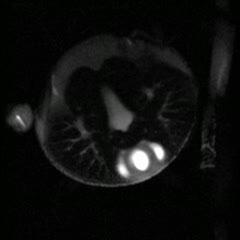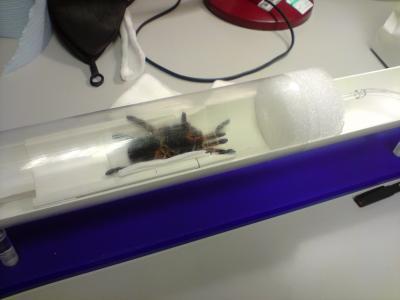Heart rate and cardiac output were measured, giving much more accurate readings than previous methods which were either indirect or highly invasive.
Application of this technology is often purely medical; however diversifying its use can have practical benefits or even answer fundamental biological questions. "One potential practical use of this research is to ascertain the chemical composition of spider venom," says Mr. Merrifield. "Venom has applications in agriculture as a potential natural pesticide. On the more academic side of things if we can link MRI brain scans with a spider's behaviour, and combine this with similar data from vertebrates, we may clarify how intelligence evolved."

This shows MRI images of a tarantulas heart beating in real time.
(Photo Credit: Gavin Merrifield)

Scientists can color the MRI images to highlight organs. The heart is shown in lighter colors in the posterior part of the body.
(Photo Credit: Gavin Merrifield)

This shows the tarantula ready to going into the specialized MRI scanner.
(Photo Credit: Gavin Merrifield)
Source: Society for Experimental Biology